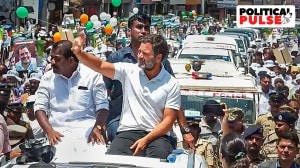- India
- International
Looking away from Assam
The patterns in the recent history of Bodo violence have not been heeded
 Bodoland, which comprises the four districts of Kokrajhar, Udalguri, Chirang and Baksa, has been burning for years now.
Bodoland, which comprises the four districts of Kokrajhar, Udalguri, Chirang and Baksa, has been burning for years now.
By: Monica Banerjee
Barely a week after Peshawar, there was another attack, this time within our own borders. At least 81 Adivasis, who form the majority of the labour force on Assam’s tea plantations, were gunned down in Sonitpur and Kokrajhar districts. Of this number, at least 18 were children and 23, women. More than one lakh Adivasis have fled their homes to live in makeshift camps. There are nearly 80 of these camps now. Assam has been home to Adivasis for more than 300 years. Yet, many still languish in relief camps set up in 1996 and 1998, in the aftermath of two gruesome riots.
Bodoland, which comprises the four districts of Kokrajhar, Udalguri, Chirang and Baksa, has been burning for years now. The ethnic tensions that cut through the land, fuelled by militancy, are palpable even to the occasional visitor. Since 1996, it has been the Adivasis or Bengali-speaking Muslims who become victims in every fresh bout of violence. The political alienation and social exclusion of these communities by the Bodos are rooted in the misplaced justification that they are non-natives. Assam’s Adivasis, who were brought in from central India to work in the tea gardens of Assam, are denied the Scheduled Tribe status that their counterparts in other states enjoy. Meanwhile, Bengali Muslims are stigmatised for being “illegal” immigrants.
From 1987, the Bodos intensified a long-running political and linguistic-cultural movement for autonomy, marked by episodes of violence. After 16 years, the Centre responded to Bodo demands, establishing the Bodoland Territorial Autonomous Districts (BTAD). In the process, the Bodos were able to acquire political and social dominance over other, smaller groups that also demanded autonomy. It is ironic that the Bodos, who enjoy political power, social legitimacy and economic authority in the BTAD today, are gripped with the fear of becoming a minority in their own lands.
Sporadic incidents of violence never really stopped after the brutal Bodo-Muslim riots of 2012. Often, Bodo men, women and children have also been at the receiving end of such violence. Nevertheless, there is the sense of a more polarised civil society emerging, based on the idea of a mono-ethnic community. Large-scale violence broke out again in May 2014, as Bengali Muslims were targeted by terrorists, leaving at least 45 dead. Among the dead were several children. Some from Bodoland’s political class even tried to ascribe reasons for the attack. Bengali Muslims had been targeted because they had not voted for a certain Bodo candidate, one Bodo political leader said. Civil society organisations in the BTAD also backed the idea that the killings were an election issue, not a matter of communal politics.

But the patterns that have emerged in the recent history of violence in Bodoland tell a different story. They point towards the systematic targeting of minorities and smaller ethnic groups by militants. The same terror outfit is believed to be behind the killing of Bengali Muslims in May, and of Adivasis in December. The larger Bodo society and mainstream groups such as the All Bodo Students’ Union have stated they have no sympathies with the terror group. But it is difficult to imagine that this violence was not rooted in minority politics and the sense of a demographic threat. State agencies should not have missed these signs of volatility.
The unpreparedness of the state and its failure to protect people has led, once again, to a mindless act of terrorism. Had Bodoland and Assam’s civil society resisted the temptation of seeing the bloodbath in May as electoral violence, they might have put some pressure on the state to anticipate and curb the next surge of brutality. The killing of the Adivasis might then have been prevented. How long will they remain mute spectators to the savagery that erupts periodically in the region?
The Nellie massacre, where armed men of the Lalung tribe cut down at least 3,000 Bengali Muslims, happened 31 years ago. Women and children had been the major victims of that brutality as well. The Indian Express has carried reports which mentioned that critical warnings from a local thana went unheeded by the political authorities of the time. More than 30 years down the line, our polity has refused to learn its lesson. We still choose to look away.
The writer is director, National Foundation for India, Delhi, a philanthropic trust that focuses on the Northeast. Views are personal
express@expressindia.com
EXPRESS OPINION
Apr 24: Latest News
- 01
- 02
- 03
- 04
- 05










































